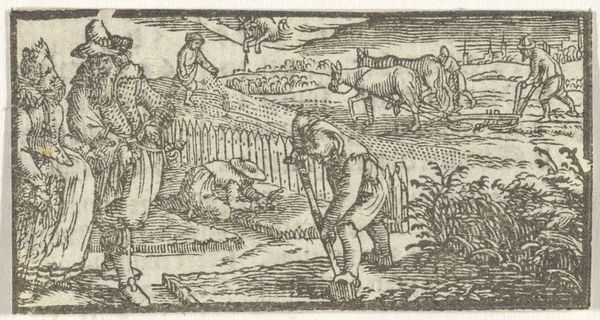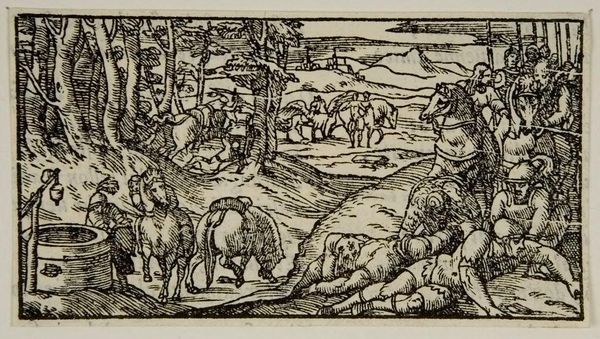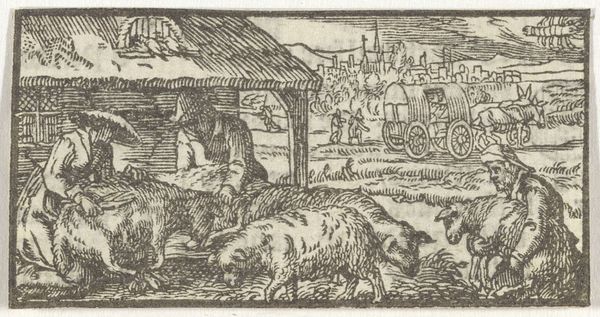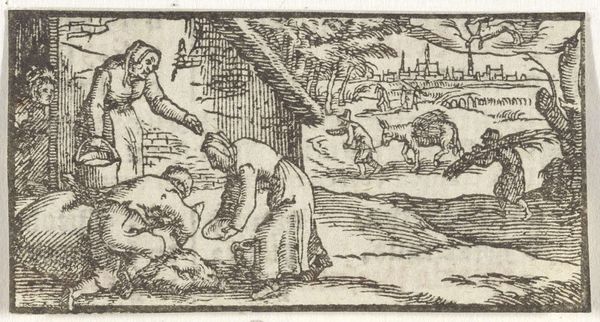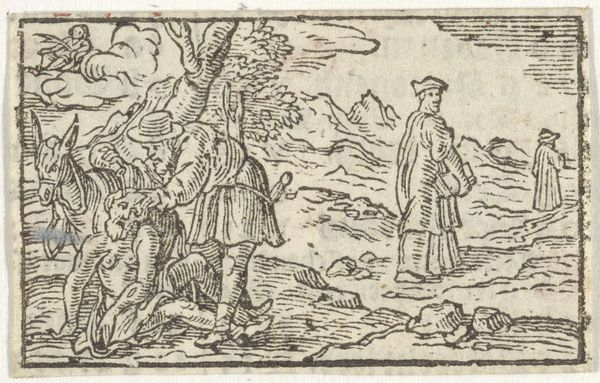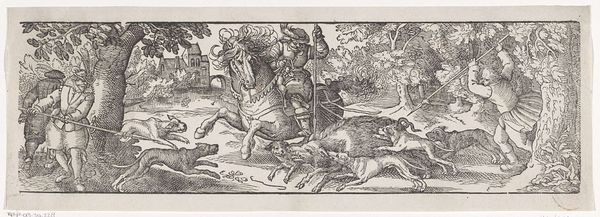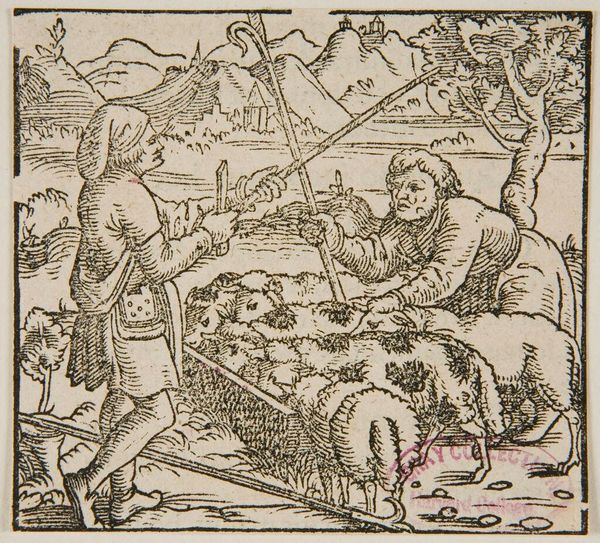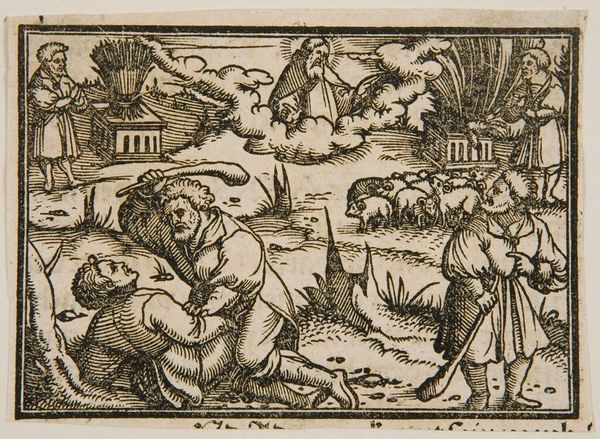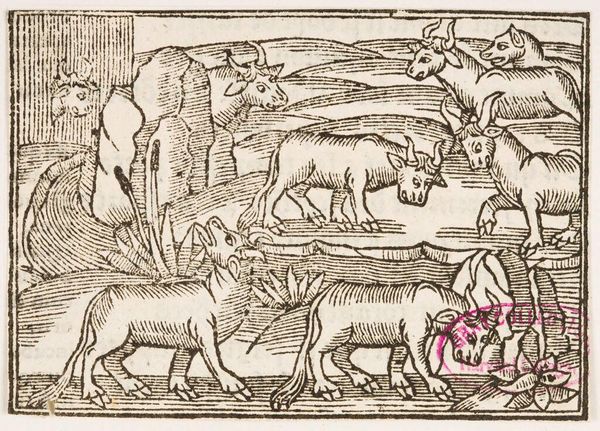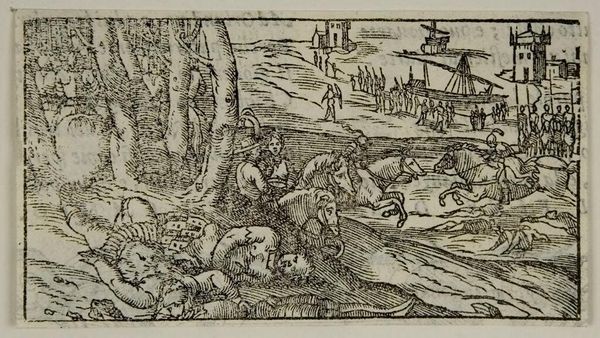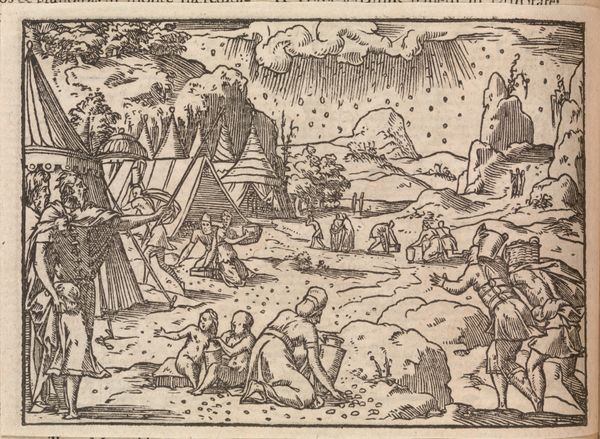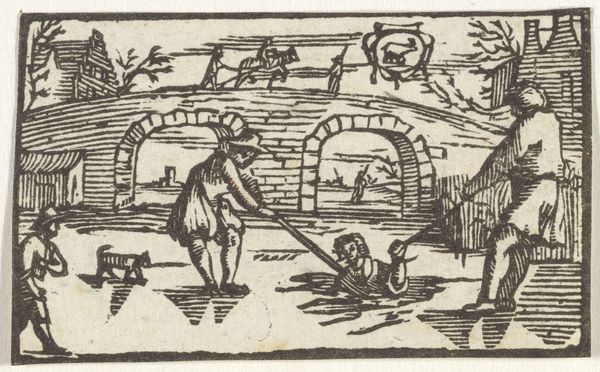
drawing, print, ink, woodcut, engraving
#
drawing
#
ink drawing
#
medieval
#
pen drawing
# print
#
landscape
#
ink
#
woodcut
#
genre-painting
#
engraving
Dimensions: height 35 mm, width 55 mm
Copyright: Rijks Museum: Open Domain
Editor: This is "Mei," a 17th-century print. I find the lines quite striking. The composition is dominated by diagonal lines and movement. It gives a chaotic yet lively impression. What do you make of the structure of this piece? Curator: The dynamism you observe arises precisely from the manipulation of form. Note how the engraver employs varying densities of parallel lines. This does more than simply define form. The line also models tonal value and spatial recession; what is near, is also darker and richer. Observe that, throughout the composition, the diagonal reigns supreme. Note that this is especially effective in creating a sensation of depth within a very limited space. The artist’s organization of formal elements – the density and directionality of line, the arrangement of volumes, create depth and movement. Editor: So, the interplay of light and shadow and the diagonal lines, they really pull the viewer in? Is the somewhat cartoonish drawing style typical for prints from this era? Curator: To engage the notion of cartoonishness would require considerable investigation into the prevailing graphic vernaculars of the era. But considering the artist’s limited toolkit— a matrix and a cutting implement of some kind – I'd call it effective. It seems to fulfill its probable objective, as a printed communication device. Its reduction of observed reality into a simplified and legible schema speaks well of the artisan’s approach. The very formal constraints necessitate a visual economy. Editor: I see your point. The artist truly used limited tools to their fullest potential, to really show off their skills. Curator: Indeed. We both observe a dynamic landscape, albeit through different analytical lenses. And yet, ultimately, our encounter with the work is personal and valuable.
Comments
No comments
Be the first to comment and join the conversation on the ultimate creative platform.
